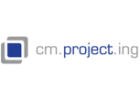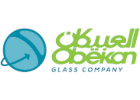Sustainable development is one of the powerful trends to drive major changes in consumer packaging. HNG has taken the path of sustainability and proactively made bold commitments to improve both the sustainability of their packaging and to fundamentally thought their packaging system.
The success of HNG is that of sheer passion and an uncompromising mindset. A decade ago, the company had installed capacity raised to 1100 TPD and was certified with ISO 9001:2000. The era of sustainable development in view of environmental and ecology awareness truly started at that time. In the year 2011, the company had constructed South East Asia’s largest glass manufacturing unit at Naidupeta, Andhra Pradesh with a clear emphasis on sustainable development.
Production, Supreme Quality and Recycling Technology Go Hand in Hand
Being India’s largest container glass manufacturer, HNG caters to some of the most respected national and international brands, catering to their glass packaging needs through multi-locational facilities. Technology has been a major thrust in HNG, adopting the new techniques and maintaining international quality parameters. The company has maintained a high-quality production line along with sustainable development that resulted in phenomenal success in terms of production and export.
The company has emphasized more on narrow neck-press and blow process to further reduce the weight of glass containers. The new technological innovation of products and processes by the company that involved glass packaging has allowed overcoming the limitations of weight and fragility. This remarkable innovation has allowed the creation of glass containers that are increasingly thin and light, but with a higher resistance, which maintains the functional properties of traditional containers.
Ecological Advantages of Lighter Glass Containers
Hindustan National Glass has revolutionized the glass production and packaging in terms of environmental sustainability and recycling. The innovative design techniques during the preproduction phase and the application of modelling techniques that use the narrow neck blowing technique greatly help in minimizing the thickness and weight of glass containers.
There are two types of advantages: short-term and long-term.
1. In the short term, the main advantage is linked to transport costs, in fact, the use of thinner and lighter containers allows a greater saturation of the spaces of the transport vehicle.
2. In the long term, the use of thinner and lighter glass containers makes it possible to achieve greater environmental sustainability because production can take place at lower melting temperatures, thus lower consumption of energy raw materials.
HNG has revolutionized the glass industry in terms of the manufacturing process, products, markets, sector economics or producers – the purpose is to transform glass raw materials through a fusion process, which has resulted in producing high-quality technical or consumer products.
Impact of Recycling Glass Containers on Environment
Along with high-volume glass production capacity, HNG also emphasizes modern technology, which allows them to create environment-friendly products. The technology implementation has contributed to creating unique materials that have the ability to be recycled infinitely. This aspect underwrites decisively to the assessment of the life cycle, as it enables the life cycle of the glass to be closed, reusing glass scrap in the production process, thus avoiding producing and ingesting more waste in the environment than pollution.
HNG’s ongoing focus is on offering more environmentally friendly packaging. This has led to a preference for glass over plastic for packaging as liquid glass cartons saw a noble performance for designs that can be simply compressed for recycling. There is also continuing developments in renewable packaging.
Conclusion
HNG has progressed in terms of its production, packaging and technology to create sustainability and eco-friendly glass recycling products. The company produces increasingly lighter and thinner containers that allow them to achieve significant environmental and economic advantages. From an environmental point of view, the technology saves raw materials, recovers energy and reduces CO2 emissions. The goal is to continue a practice that is ecologically efficient and sustainable.


























